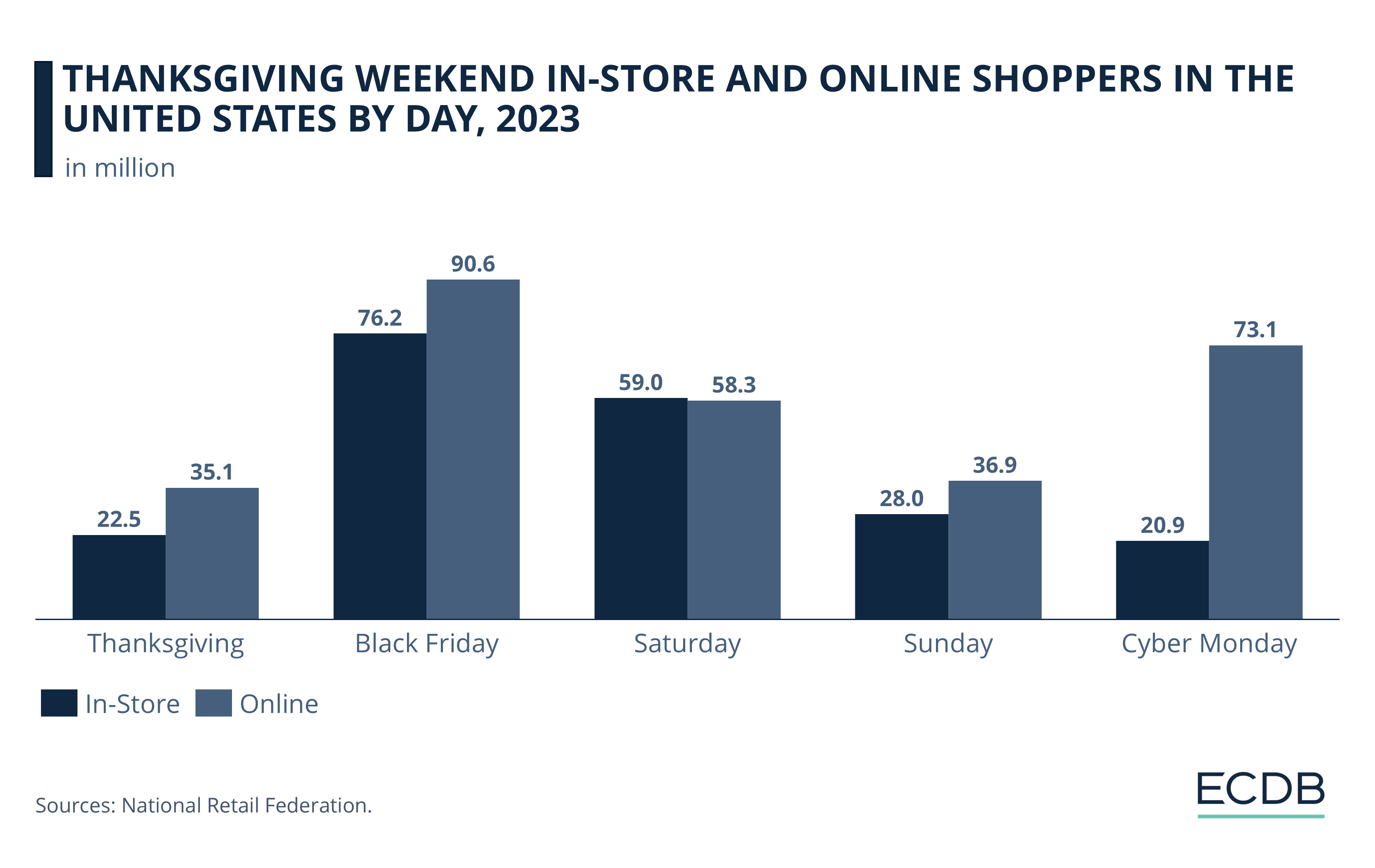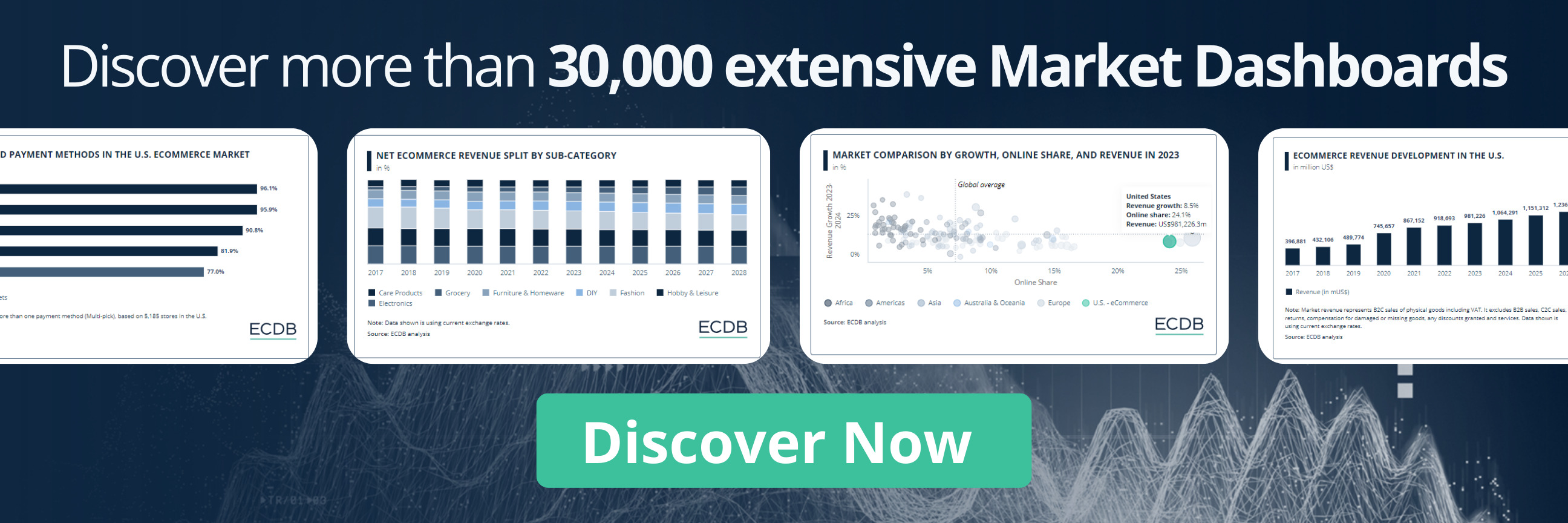eCommerce: Shopping Trends
Shopping Trends: Doom Spending
Some shopping trends are wild. Doom spending is a term used to describe reckless spending as a self-soothing behavior. It is a growing phenomenon among Gen Z and Millennials. Here is what eCommerce has to do with it.
Article by Nadine Koutsou-Wehling | September 23, 2024Download
Coming soon
Share

Doom Spending in eCommerce: Key Insights
Online Shopping to Self-Soothe: Doom spending describes a shopping habit in which consumers spend more than they can afford because they expect negative economic and societal outcomes. It is a growing phenomenon among Millennial and Gen Z consumers.
Ease of Digital Purchases Contributes: Buying products online and easy payment processes facilitate purchases. Social commerce targets users who may be particularly susceptible to doom spending. There is a conflict of interest between increasing spending and the incentive to save finances.
Doom spending is a recent buzzword that describes an unhealthy spending habit in anticipation of negative developments in the economy and society as a whole. Millennials and Gen Z in particular seem to be affected by it. There are several factors that influence this psychological phenomenon, and eCommerce has a direct impact.
What Exactly Is Doom Spending?
Digital access and widespread connectivity of personal lives, eCommerce, and online payments make it easier to spend money 24/7 – and a growing proportion of people under 35 find it difficult to control their finances in this environment.
Not only that, but “doom spending” describes a self-soothing behavior of purchasing products despite personal financial strain to relieve psychological stress. In most cases, the stress is directly related to negative expectations about future economic and social developments – in society and in personal life as a whole.
It is a paradox, but not a rare occurrence. Out of hopelessness and pessimism, consumers trade off financial responsibility and frugality to buy products they may not really need or that are out of their financial league – the good feeling ensuing from the purchase lasts for a few hours, after which it seeks to be replicated, ideally with another purchase.
Social Commerce Is Ideal for Doom Spenders
Social media plays a direct role in this phenomenon – “doomscrolling” is a term on TikTok to describe the difficulty in stopping oneself from watching negative news on one’s device, knowing full well the detrimental psychological effects this can have. It is no wonder that younger users may have a pessimistic view of the future, given their constant exposure to bad news.
At the same time, social media is also an important promotional tool for brands. Influencer marketing is a particularly effective strategy for reaching young audiences. With the rise of brands like Temu or Shein, buying low-cost items may not seem like a financial risk, but given the quantity and frequency of purchases, consumers are still spending their money.
Valuable Insights: Our data-driven rankings are regularly refreshed to provide you with crucial insights for your business. Find out which stores and companies are performing will in the eCommerce space and which categories are topping the sales charts. Stay ahead of the market with our rankings for companies, stores, and marketplaces.
Conflicting Interest: To Splurge or Not to Splurge?
There is a conflict of interest: Retailers need increased spending for continued growth, but this means that consumers are also incentivized to make purchases that may be unnecessary or harmful to their finances.
eCommerce feeds into this phenomenon, because it is easy to purchase, easy to pay, and always available.
As the holiday season approaches, this issue becomes even more prevalent: Shopping events like Thanksgiving, Black Friday and Cyber Monday lure consumers with discounts and exclusive deals. Last year's season in the United States shows that the number of online shoppers is taking the lead over in-store shoppers.

There are ways to control one’s finances, without giving up on online shopping altogether. These include financial planning, enabling banking notifications, limiting the use of negative news and keeping a spending journal.
Sources: CNBC – NRF – Psychology Today

Click here for
more relevant insights from
our partner Mastercard.
Related insights
Deep Dive
Factors That Impact U.S. Holiday Shopping in 2024: Election, Deals, Weather, Number of Days
Factors That Impact U.S. Holiday Shopping in 2024: Election, Deals, Weather, Number of Days
Deep Dive
FTC’s New Ban in Effect & How to Spot Fake Reviews in Online Shopping
FTC’s New Ban in Effect & How to Spot Fake Reviews in Online Shopping
Deep Dive
Holiday Season Shoppers Turn to Discounts and Deals Early
Holiday Season Shoppers Turn to Discounts and Deals Early
Deep Dive
Inflation's Impact on eCommerce
Inflation's Impact on eCommerce
Deep Dive
Older Consumers Drive Growth in the Chinese eCommerce Market
Older Consumers Drive Growth in the Chinese eCommerce Market
Back to main topics
